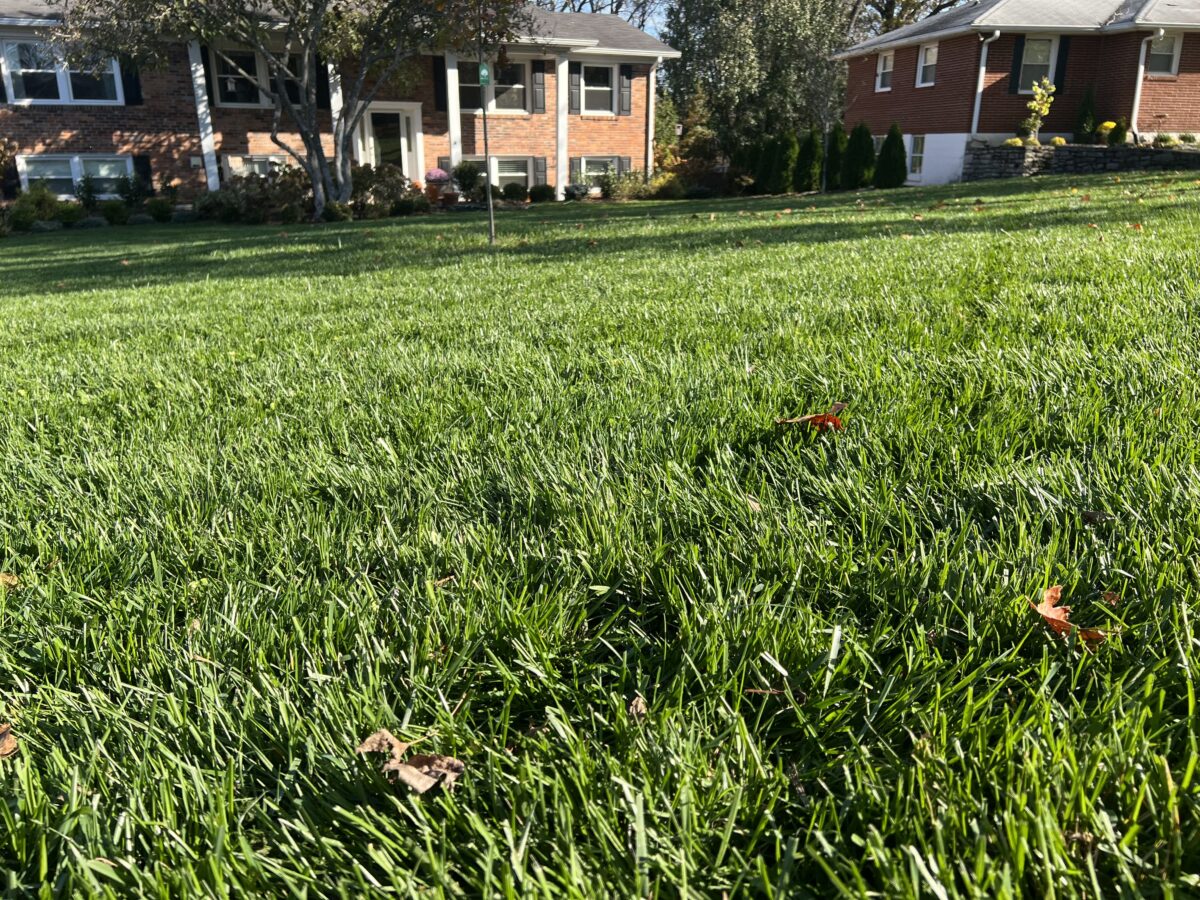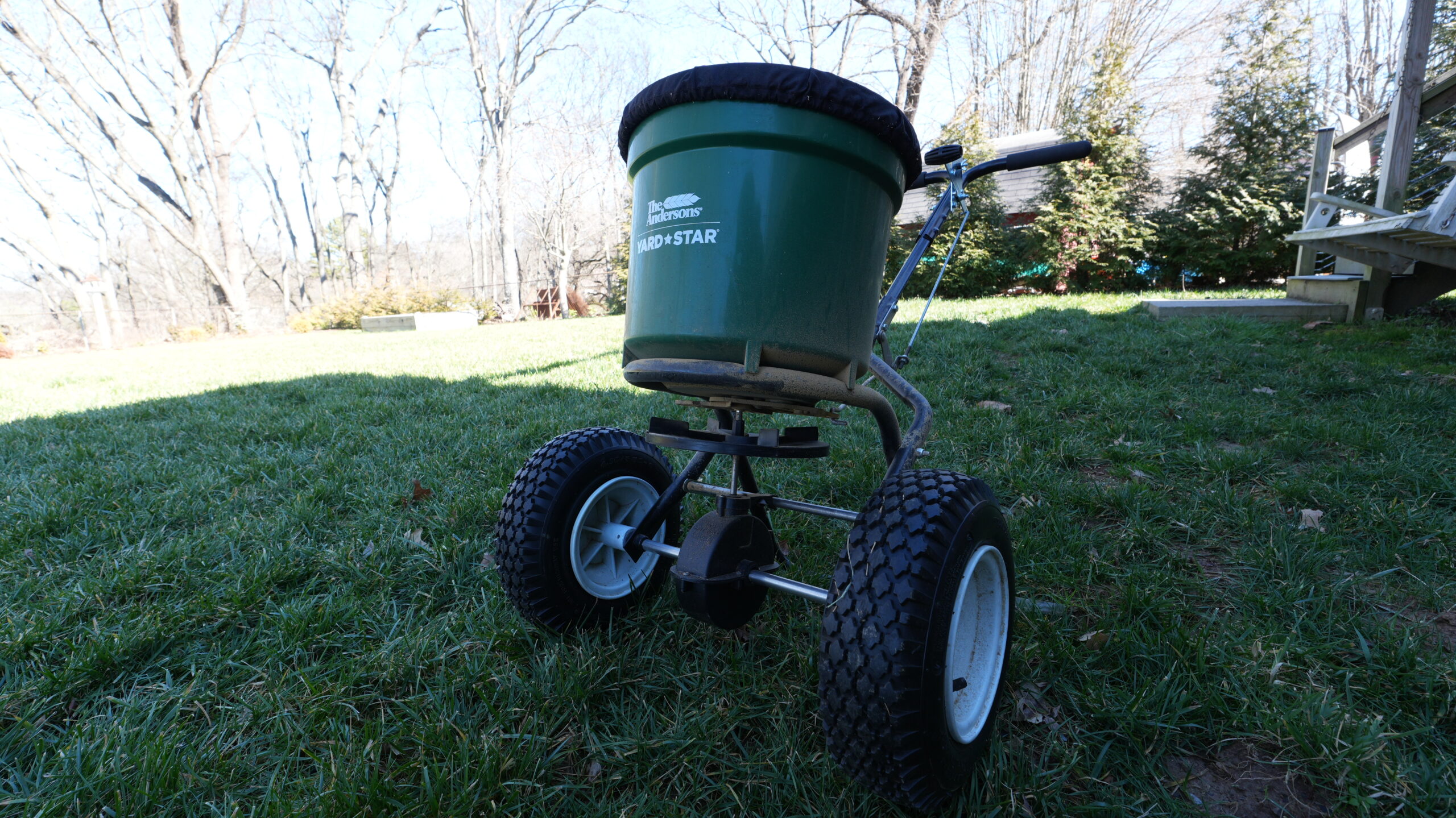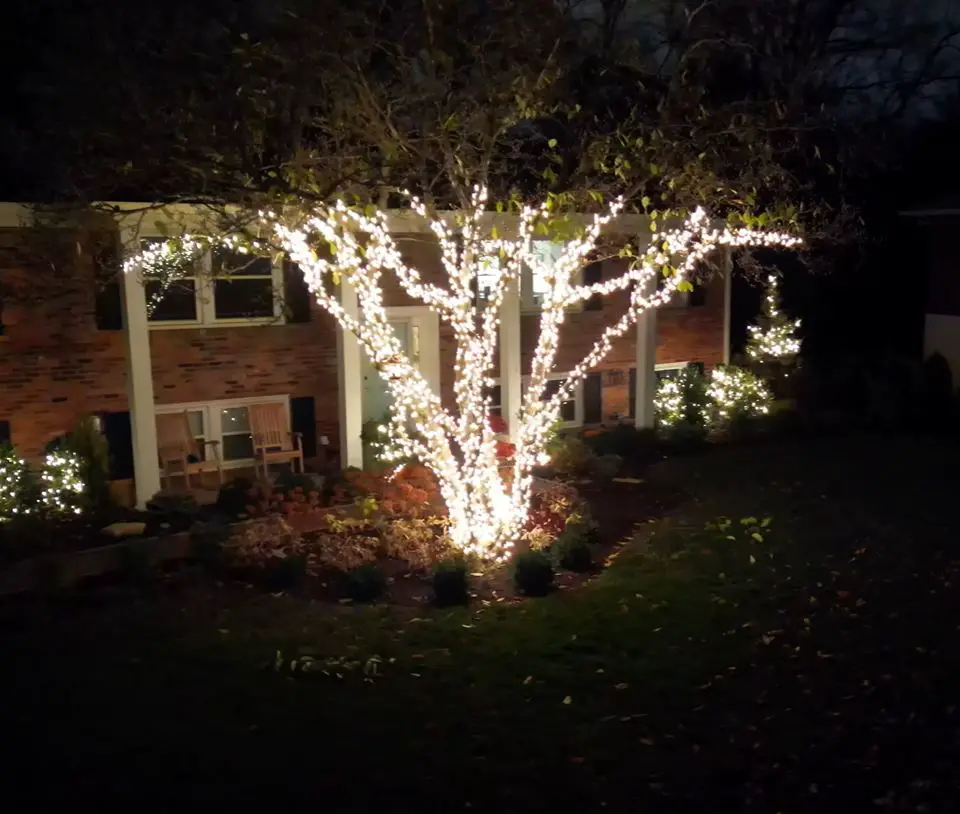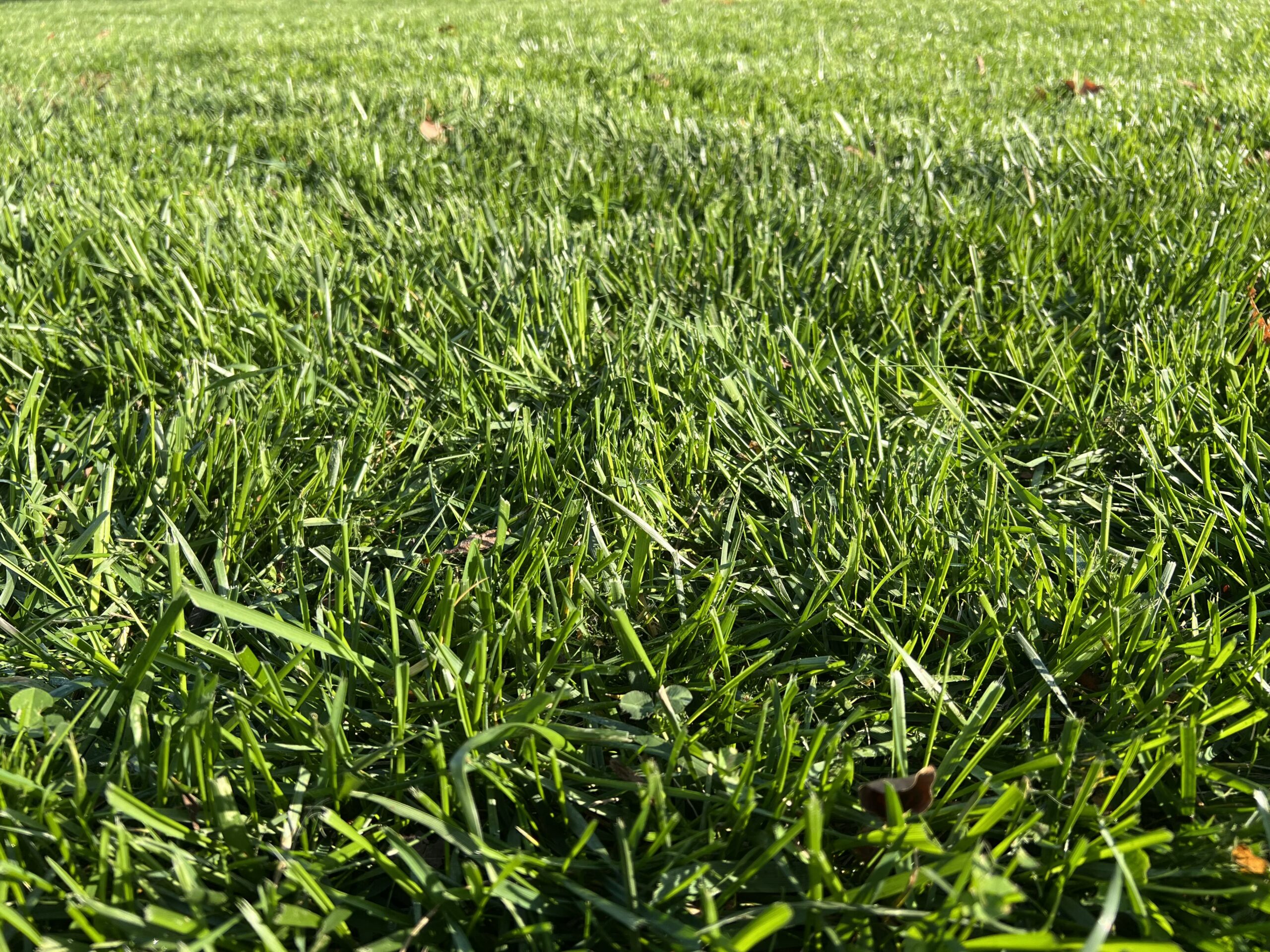Different types of invasive grass can do more damage than others, but all invasive grasses have one thing in common: they are incredibly annoying.

Whether you’re preparing your lawn for the first time, or just noticed some weird looking grass growing in your yard – we are going to figure out what type of grass is invading your lawn and what to do about it.
All that time you spent doing a soil test, getting the right fertilizer, watering, and preparing for the perfect lawn can get ruined overnight.
So, let’s get started identifying some of the common invasive grass species.
How to identify your grass type
If you haven’t signed up for our email list to get our full-year green grass guide, you’re missing out on amazing content like the infographic below. This is a great starting point for all grass care – knowing what you’re working with. Once you understand this, creating an action plan for getting rid of invasive grass species will be way easier.

Common Types of Invasive Grass in Lawn (with action plan)
What good is it knowing what type of invasive grass species is pirating your lawn without a proper action plan to get rid of it? Imagine going to the hospital with a heart attack and they say “Yep, that’s a heart attack. See you later”. NO!
You came here for some solutions!
Let’s get going.
Oh, and if you have ants in your grass, check out our guide on how to get rid of ants in your grass without killing it.
Nutsedge identification and removal
Nutsedge almost looks like a promising, overgrown natural grass that you would like, but turns into a beast that sticks out like a sore thumb. Because of how big and dense it is, it can totally wreak havoc on your yard if it is allowed to proliferate.
Clemson University (garbage football school) recommends a few different methods for getting rid of it. One thing recommended to get rid of it is to dig 10 inches below the nutsedge and an 8-10 inch diameter around it. Certainly possible, but you might as well just dig another few feet and make your own grave with how much that would suck to do.
In reality, Clemson gives really good advice on how to handle it if you are very scientific and have the appropriate equipment. Our advice is to keep it simple.

How we recommend getting rid of nutsedge invasive grass
While Clemson’s mechanical method is a sure fire way to destroy your life, there are other options. The good news is that you can get a simple spray, which is what we recommend. The bad news is that nutsedge is extremely stubborn, so multiple applications and patience will be required.
Something you can grab at any Home Depot or even on Amazon is Ortho’s Nutsedge Killer for Lawns. It works with purple and yellow nutsedge and is extremely easy to use.
Crabgrass identification and removal
Crabgrass is an annoying late-spring annual weed that is characterized by a central base with stems branching out in a big circle around it. It can form little colonies or neighborhoods of grass and are extremely tough. If you’ve ever tried to pull a big one of these out of your lawn, you know just how difficult it is to completely get out. The central core tends to be very hearty and deep.
These also do well in places like sidewalk and driveway cracks, which can be extremely annoying and difficult to remove.

How to get rid of crabgrass in your lawn
The best offense is a good defense. During the course of your seasonal lawn care, make sure to apply a pre-emergent herbicide specific to crabgrass in the early spring or even late winter if you can.
Even something really basic like a Scotts Halts Crabgrass can help minimize any crabgrass from getting roots in the middle or late spring. If it’s too late and you see it in your yard, use something easily accessible like a Roundup Crabgrass Destroyer.
Bermudagrass as an invasive grass
Unwanted invasive bermuda is the bane of my existence. I have fescue and live in a transition zone, so bermuda grass pops up at some point in the heat of the summer every year.
Bermuda is a warm season grass and thrives in the heat of the summer under full sun. Many southern states have beautiful bermuda grass – especially big turf fields. But many of us find it to be more of a pest than anything. For me, bermuda shows up on the edges of my lawn during the summer, always ruining the perfect edges.

How to get rid of unwanted bermuda grass in your yard
Once you’ve noticed bermuda growing in your yard, grab an easy BioAdvanced Bermudagrass control for lawns. This product is super easy to use and pretty dang effective if you have cool season grass. As a plus, it takes care of crabgrass, foxtail, and a few others.
Clover as an unwanted grass type
Not talking about Lucky Charms – in fact you aren’t lucky at all if you get this. It is a perennial weed that is super common in America. The most common characteristic of clover is obviously the little leaves that people think are lucky, but also some small little flowers.

I have neighbors that don’t mind clover at all, but for those that are picky like you and me, we want to get rid of them ASAP as possible.
How to get rid of clover in your lawn
Clover is easy to fix because it is a tell-tale sign of an under-loved lawn. Your lawn needs better nutrients if you have clover. If you don’t know what your lawn needs, then take a soil test – don’t just guess and ruin your yard.
Step one is to do a soil test and fertilize your yard, let the good grass grow. Clover also has really shallow roots and is easy to pull out by hand. Lastly, spot treat the rest of your yard with something like a Bonide Clover Killer – this can help make sure it is gone for good.
Wild Onions are an invasive grass
If your lawn makes you cry, it may be because of the onions getting chopped by your mower. This cool season weed grows and forms little bulbs beneath the ground. They aren’t exactly onions but start to look and smell just like them.

You will see wild onions in your lawn most frequently in the autumn, when it starts to cool down a bit. Pulling these up is kind of a fruitless (or vegetable-less effort) because the bulbs will stick in the ground and just keep sprouting.
How to get rid of wild onion in the lawn
Luckily, wild onions aren’t all that hard to kill. There are great options like Ortho WeedClear – a simple product that covers a bunch of different weeds. A simple spray and pray will work here.
Quackgrass is a stubborn invasive grass
I had never known what quackgrass was until I had a friend ask me to write about it for this article. Quackgrass is a true pest. It is a cool season invasive grass that actually releases chemicals that hurt other plants. They grow super fast and are really aggressive.

Maintaining a super healthy lawn is the best way to prevent quackgrass from coming – don’t give it any easy landing spots.
How to get rid of quackgrass in your lawn
Quackgrass sucks. And sadly, there aren’t specific quackgrass killing sprays or solutions. The best thing on the market is good old fashioned RoundUp as soon as possible. Then again and again and again until it gets killed to death.
Green Foxtail invasive grass
Green foxtail is a summer annual that sprouts out really big and tall – almost up to a foot in length. It has these spiky hairs at the very tip which make it extremely easy to identify. You generally won’t see this in your lawn unless you really let it go. Maybe a spot that you miss when you mow – behind the shed or up against the house.

You can cut them down, but they will continue to shoot out the long bristled endings.
How to get rid of green foxtail in your lawn
The best offense is a good defense of course, with applying a nice pre-emergent and nurturing your lawn throughout the year. But if you’re reading this, it is probably too late.
A nice broad spectrum weed control product will work, like good old fashioned RoundUp as mentioned earlier. Simple solution for a simple problem!
Dandelions – common weeds
Who doesn’t know what dandelions are? Probably one of the most famous weeds in the world (besides weed, of course) that everyone is familiar with. Not only the famous yellow characteristic flower, but also the dried out version that people make a wish with.
The all-star of the lawn weeds game doesn’t mean that you are happy to see them. They spread super easily and can actually be pretty ugly when they spread.
How to get rid of dandelion in your lawn
Fortunately since dandelion is so common, it has a billion easy killer solutions. One of the most popular solutions is OrthoWeedClear – the same stuff you can use for clover (two birds, one stone).
Creeping Charlie removal guide
Creeping Charlie is a hard-to-tackle weed that is almost too pretty to kill. It has nice green, round leaves with purple flowers. It is closely related to mint, so actually has a decent smell as well. It won’t grow too tall and does best in shady areas and underneath trees.

How to get rid of Creeping Charlie in your lawn
Creeping Charlie can be knocked out with something called Triclopyr Ester, which also works with clover and unwanted bermuda.
Triclopyr is not the most popular lawn product in the world, but will definitely get rid of Creeping Charlie. There are some side effects, however. This product is not great for warm season grasses like Zoysia and Bermuda.
Bluegrass – not the good kind
Bluegrass, when unwanted, is a confusing grass species that almost resembles fescue in its early stages. In fact, I had a friend send me a picture of some bluegrass and ask if his fescue was getting too long.
Unfortunately, when Bluegrass starts to really grow out, it gets bunched up and grows these little fuzzy heads that stick out like a sore thumb. The fuzzy heads can really start to make your lawn look discolored and then it becomes extremely apparent that you have a problem.
How to get rid of bluegrass in your lawn
The best way to get rid of bluegrass is with a simple spray of RoundUp – the easiest and most common herbicide on the market. The trick with RoundUp is to make sure to apply it when its nice and dry outside without a threat of rain. Otherwise, it will wash right off.
The Bottom Line on invasive grass types
One common thread you will see in each of these weed control methods is to play defense. The best way to prevent weeds and invasive grass in your lawn is to apply a pre-emergent, continue to water your lawn, mow regularly, and make sure your grass is as healthy as can be. Proper aerating and overseeding at the right time of the year is important as well. Crowd out the bad with the good.
Kind of a good life motto as well.
Why we started the Lawn Review
We started The Lawn Review out of frustration. We couldn’t find clarity around what type of products were actually good and reliable. All the fertilizers we tried didn’t work. We ended up with a dying lawn, wasted time, and wasted money.

So we started buying and reviewing lawn tools and figuring out which ones were the best. And now we’ve moved onto actually keeping that grass nice and healthy all year around.
We’ve spent thousands of hours building this content for people just like you and me – normal people.



